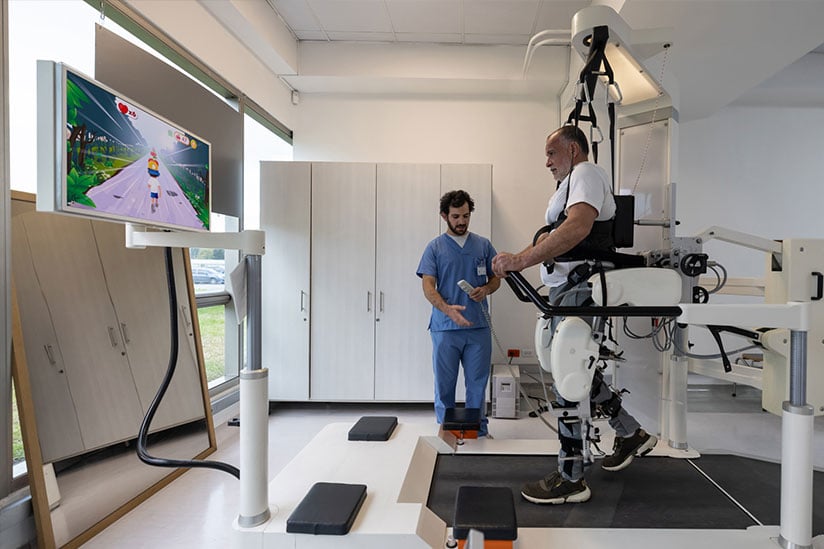How Technology Is Changing the Nursing Industry
3 min read
From time-saving software to life-saving equipment, technology in nursing is essential to improving patient care and outcomes, encouraging nursing innovation, and promoting safety. Today's tech lets nurses streamline efficiencies, better manage workloads, and increase team communication. Best of all, nursing technology allows caregivers more quality time to interact with their patients and involve them in their care and treatment.
The Top New Technologies in Nursing
Nursing technology keeps getting better, with seemingly infinite application opportunities. Explore these technologies that are transforming the nursing industry to create higher-quality patient care and outcomes.
Electronic Health Records (EHRs)
With EHR systems universally replacing paper charts and records, nurses can access patient information in real time. This efficient data management tool reduces errors, streamlines documentation, and enhances communication among the health care team. One fast-growing field that utilizes EHR systems is nursing informatics, which uses technology and data to enhance patient care.
Portable Diagnostic Devices
From handheld vital sign monitors to portable EKG and ultrasound devices, nurses can conveniently and efficiently deliver on-the-spot care in various health care settings. These devices also empower patients to be more active in their treatment and health management from their homes. Self-monitoring lets patients strengthen communication and collaboration with their health care team.
Robotic Assistance
Robotic "colleagues" help ease nurses’ workloads, saving precious time, energy, and physical and mental strain. Cobots, or collaborative robots, perform repetitive tasks so nurses can focus on more pressing matters. They also assist with physically strenuous duties to reduce workplace injuries. Robotic carts can take over routine duties like transporting lab specimens, disposable equipment, and medications. There’s even artificial intelligence (AI) to draw blood.
Another new technology in nursing is eldercare robots. These bots assist older patients with various aspects of their daily care, such as mobility, monitoring, safety, and cognitive stimulation.
Electronic Medication Management Systems (EMMS)
EMMS is critical in streamlining medication management, reducing errors, and improving patient safety. The system includes functions for prescribing, administering, dispensing, reviewing, and disposing of medication. EMMS also decreases the risk of errors caused by illegible handwriting, incorrect orders, or dosing instructions.
Telehealth That Expands Possibilities for Care
The COVID-19 crisis accelerated the use of telehealth technology, and it continues to be instrumental in helping nurses reach patients outside the clinical setting. Those in remote areas or with limited mobility can receive medical consultations and follow-up care from home. Telehealth also lets caregivers remotely monitor patients with chronic conditions.
Improving Patient Care Through Technology

New nursing technology provides cost-effective solutions, enhances safety, improves patient outcomes, and offers a better work-life balance for nurses.
Let’s look at several ways technology impacts nursing practice.
- Technology streamlines communication. From HIPAA-compliant text messaging apps to standardized tools that correct miscommunications in patient handoffs, new communications tech helps nursing teams reduce fragmented care and make processes function more cohesively.
- Patients have better access to medical records. Patients have the right under federal law to access their medical records when requested. Having secure and current EHR software that’s simple and intuitive makes the delivery process seamless. It also empowers patients by giving them greater control over decisions regarding their health.
- Fewer barriers lead to greater health equity. According to the Centers for Disease Control and Prevention (CDC), individuals in remote areas of the U.S. are more likely to die prematurely from heart disease, cancer, and stroke. Telehealth can provide access to elderly and immunocompromised patients, and those with limited mobility or who live in remote regions.
- Less work demands decrease nurse burnout. Nurses spend up to one-third of their shift performing routine tasks like collecting supplies and picking up medications. Technologies like smart wearable sensors that collect patient data and electronic medication management systems that streamline processes can alleviate time-consuming responsibilities. These efficiencies let nurses focus on more critical tasks and quality patient time while reducing the risk of nurse burnout.
By embracing new technology in nursing as it emerges, caregivers can work more effectively to deliver the best patient care. It also plays a crucial role in easing the challenges nurses face regularly, reducing nurse fatigue and increasing overall quality of care.
Images sourced from Getty Images


